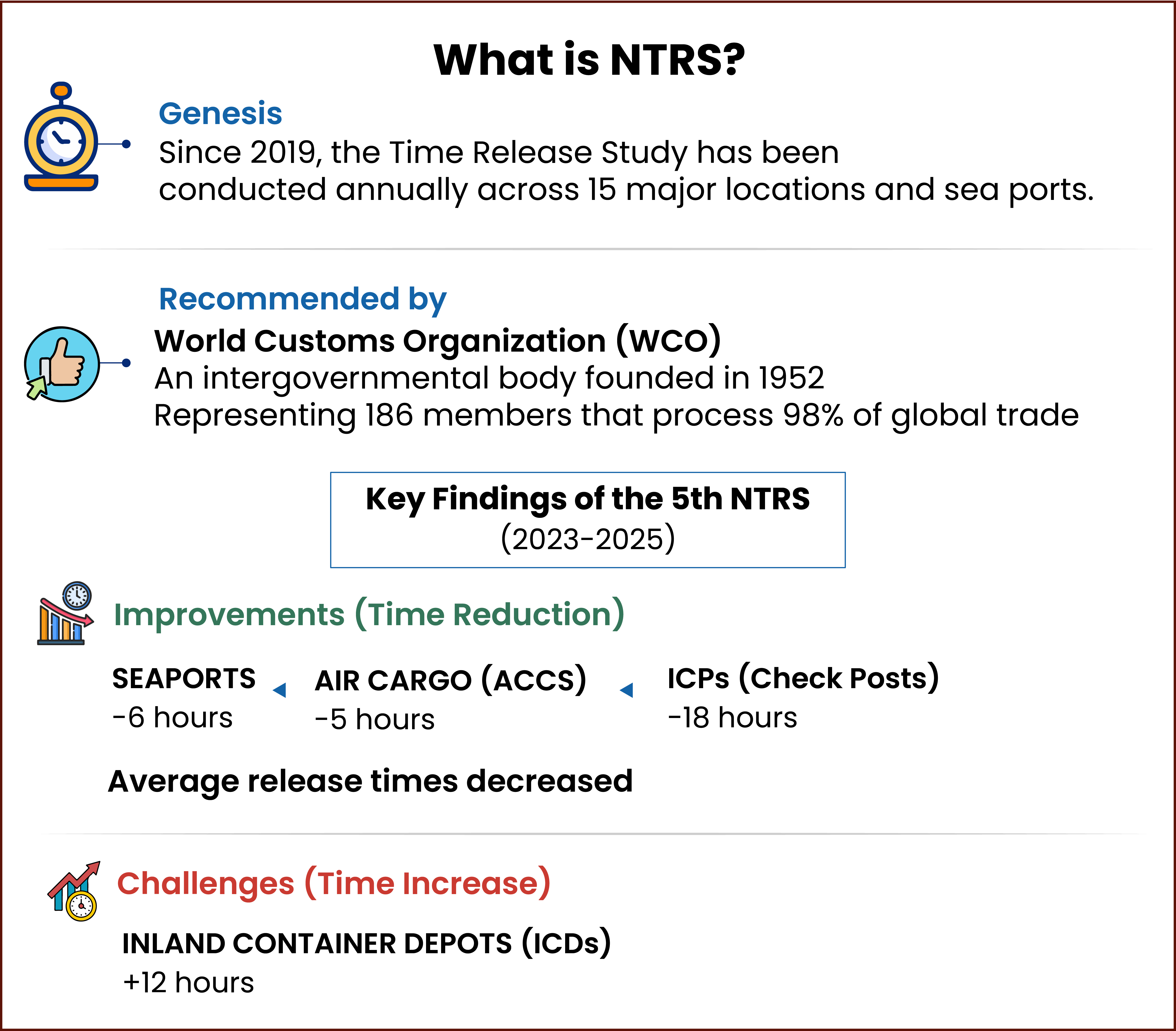Prepared by the Central Board of Indirect Taxes and Customs (CBIC), the report assesses the speed at which goods are cleared at ports across land, sea, and air, thereby helping to boost India’s logistics efficiency.
- The report shows notable progress in cargo clearance times at key import gateways between 2023 and 2025 (refer to the infographics)

Why Logistics Matters for India?
A robust logistics sector supports trade, reduces business costs, and connects Indian industries with global markets, thereby helping initiatives like ‘Make in India’ succeed.
- Employment: Over 22 million people work in the logistics sector.
- Competitiveness: Lower logistics costs help Indian products compete globally.
- Current Status: India ranked 38th out of 139 countries in the 2023 World Bank’s Logistics Performance Index, improving from 44th in 2018.
- Goal for 2030:
- Rank among the top 25 nations in logistics.
- Reduce logistics costs to less than 10% of GDP
Steps taken leading to improvements in India’s Logistics Sector
- Dedicated Freight Corridors (DFCs): The Eastern and Western DFCs have cut goods transit time by 20–30%.
- 96% (2,741 km) of the route is now operational.
- E-Way Bill System: Introduced under GST, it has made goods tracking easier and reduced road transport delays.
- National Logistic Policy (2022): Aims to lower the cost of logistics from 13-14% to around 8-9% of the GDP.
- National Trade Facilitation Action Plan (NTFAP) 3.0 (2024–27): Launched by CBIC, it focuses on reducing cargo release times across ports.
- Aligned with the WTO Trade Facilitation Agreement to promote smoother cross-border trade.



